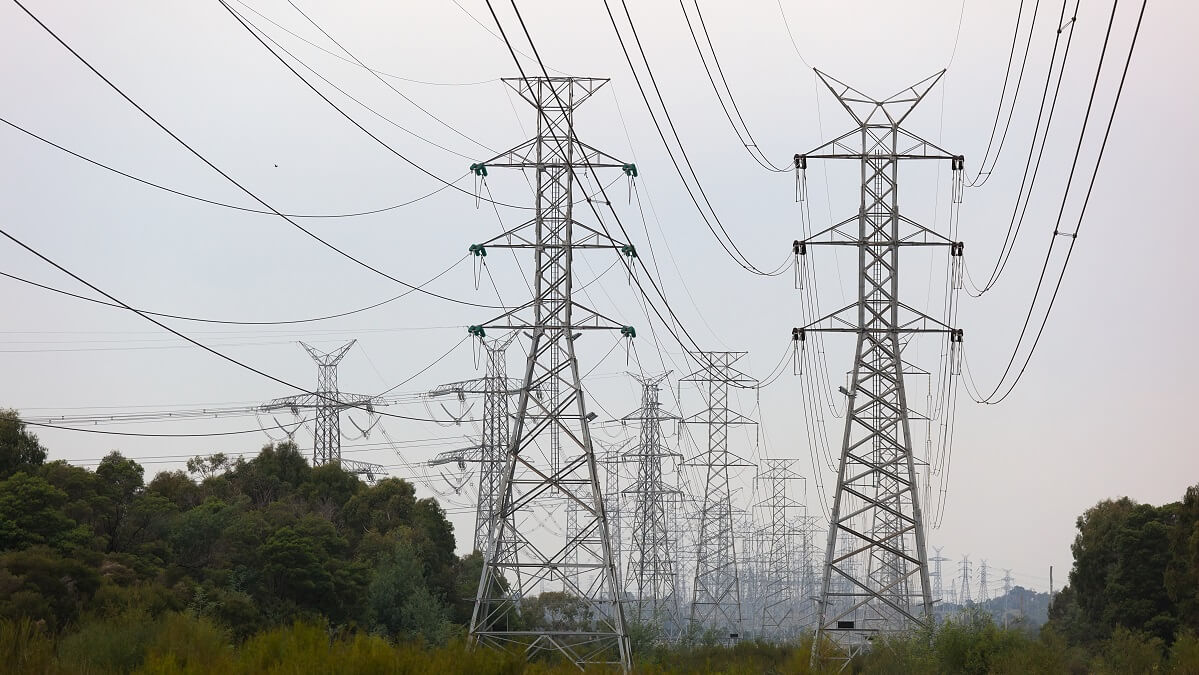Experts are warning power bills could jump 25 per cent overnight this winter in one state if the electrical grid recovery takes too long.
More than half a million Victorian homes were left without power last week after an intense storm lashed the state, damaging transmission lines and causing a power station to go offline.
Around 1.5 million people went without electricity for at least some time on a sweltering afternoon, many were left without power for days and some families are still waiting to be reconnected a week later.
Wholesale price goes wild
But the outage caused more than just hot and bothered customers. After the storm hit, the wholesale power price in Victoria shot up to a whopping $16,600 per megawatt hour, compared to $299.98 in NSW and just $60.39 in Queensland.
The wholesale power price, also known as the spot price, is a fluctuating price point that responds to supply and demand and represents the ‘market’ rate for that state at that point in time.
So, Victoria’s wholesale power price went through the roof when power generation (or supply) there was reduced, but demand remained high.
How does this affect my bill?
A momentary spike in wholesale prices like that shouldn’t have an immediate impact on your electricity bill, as you have most likely signed a contract with a retailer or are on the Default Market Offer (DMO).
The DMO is essentially a price cap on how much energy retailers can charge customers on their default plan, for those who can’t or won’t shop around. The DMO is updated every year in March, with the new price going live on 1 July.
When the regulator announces the new prices, they factor in any increase in wholesale costs the power companies are currently experiencing. So, if Victoria’s spot price remains too elevated for too long, the regulator may have no choice but to significantly raise prices in July.
Some experts, like Compare Club’s General Manager of Utilities Paul Coughran, says that increase could be as much as 25 per cent this year if Victoria’s damaged power infrastructure can’t be brought back online soon enough.
This would be on top of the 25 per cent increase in the DMO last year.
“The jump last year was as a result of coal power plants being offline for several months,” he says.
“We then had a situation where our redundancy (gas fired plants) was experiencing huge price spikes due to the war in the Ukraine. So that’s a 25 per cent increase year on year right now. “
Can anything be done?
When power stations go down, temporary generation is possible using gas- and coal-fired generators to fill the gap. But the price problem still remains, as the cost of gas and coal in these situations jumps dramatically.
Recognising this problem and soaring energy bills in general, the Albanese government implemented caps on gas and coal prices in late 2022. In April last year, those caps were extended until 1 July 2025.
No announcement has been made on whether the caps will be extended beyond that date, but the government has said it is working with gas suppliers to expand supply.
But Mr Coughran says it is essential the government officially extend these caps now because the wholesale market will go and buy supply for two or three years in advance.
“If that doesn’t look like being extended, it will drive up those prices exponentially beyond that date,” he says.
“At a time when cost of living is out of control, we need those caps locked in for longer. The government needs to intervene now otherwise we could see 45 per cent price rises year on year”.
The government says it remains committed to easing cost-of-living pressures, hinting at possible relief in the March budget, but is still tight-lipped on the gas and coal price caps.
Do you think the government should extend the gas and coal price caps? How have your power bills been over the past year? Let us know in the comments section below.
Also read: Too many Aussies ignoring valuable energy rebates


Nobody expects them to drop do they?
When this happened in South Australia, it was blamed on “Renewables”, the Power Stations were back “online” within days, the Power Distribution was re-routed, and some areas had power restrictions for several days, and the cost did NOT go up by 25%.
Temporary transmission towers were sent by Western Power and were installed, taking about a dat each, with the network being slowly restored.
Read more here :- https://en.wikipedia.org/wiki/2016_South_Australian_blackout